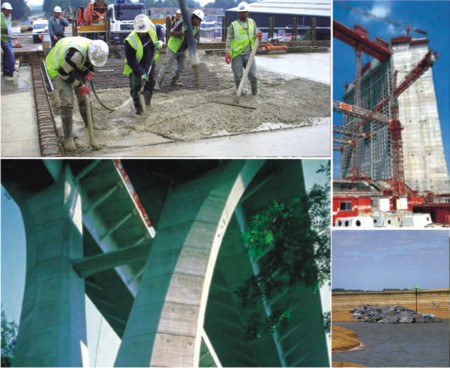Types of Flooring
The following are commonly used types of flooring.- Cement Concrete flooring
- Terrazzo flooring
- Crazy Marble flooring
- Brick flooring
- Ceramic Tile flooring
- Marble flooring
- White Marble Flooring
- Kota Stone flooring
- Wooden flooring
Cement Concrete Flooring
Cement and concrete are main components of both commercial and residential flooring. Cement is key ingredient in concrete products. It is binding agent that holds sand and other aggregate together in a hard, stone-like mass. Concrete is produced by mixing cement with fine aggregate (sand), coarse aggregate (gravel or crushed stone), water, and often small amounts of various chemicals called admixtures which control such properties as setting time and plasticity. When the water is added to cement, it forms a slurry (thin semi-liquid cement) or gel that coats surfaces of the aggregate and fills the voids to form solid concrete.The ratio of water and cement is the key that determines the strength of concrete whereas aggregates provide thickness, and decoration in some cases. Cement concrete flooring consists of cement concrete in the ratio of 1:2:4 (1 part of cement, 2 parts of coarse sand, and 4 parts of graded stone aggregate). Its thickness varies from 25mm to 50mm. The base concrete should be provided with slopes.
Flooring in veranda, courtyard, kitchens, and baths should have slope ranging from 1:48 to 1:60 depending on the location. Floors in water closet should have slope of 1:30.
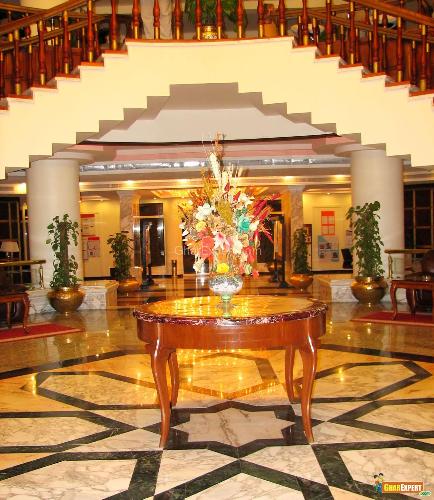
Concrete Cement flooring... back in trend
Terrazzo Flooring
It is popular flooring for residential as well as public buildings. Terrazzo tiles have a smooth shine and are designed with marble or granite chips which add attractive designs to them. It’s available in an excellent range of colors and textures. This flooring is usually not slippery when wet because this has many grout lines. Terrazzo flooring consists of an under layer of cement concrete in ratio of 1:2:4 (1 part of cement, 2 parts of coarse sand, 4 parts of graded stone aggregate, 12.5 nominal size). Its thickness varies from 34mm to 28mm. Thickness of top layer of marble chips varies from 6mm to 12mm whereas the thickness of terrazzo flooring depends on the size of marble chips used. 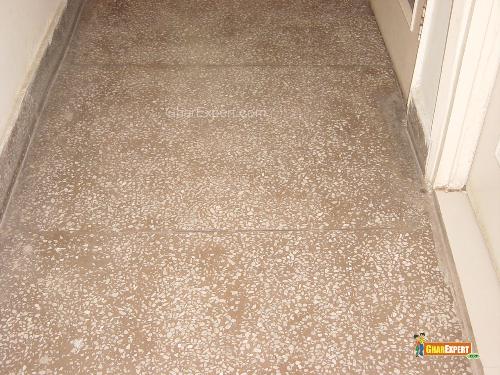
Terrazzo floor
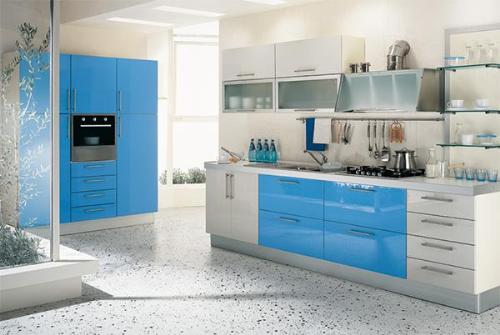
A blue white blend of color in kitchen with perfect terrazo floor
(This Picture is Contributed by "Apurva Sharma")
Crazy Marble Flooring
It is little different from mosaic flooring for its casting. The cement concrete under layer of crazy marble should be 25mm thick. Marble stone pieces are laid on cement concrete base. The usual thickness of marble stone pieces is 20 mm to 30 mm. The mix of cement chips 4:7 is laid around stone pieces.The mix of crazy marble stone flooring consists of white cement-marble powder mixture (ratio 3:1) by weight in proportion of 4:7(4 cement-marble powder mixes: 7 marble chips).
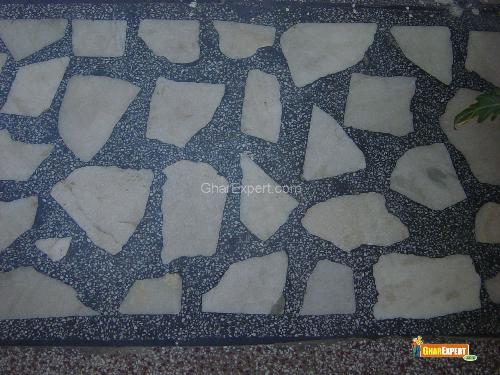
Crazy Marble Flooring
Brick Flooring
Bricks are very easy to install. As bricks are slip resistant you can avoid danger of slippery even when the floor is wet. This is the cheapest floor and is used in low category houses and temporary structures. Cement mortar in ratio 1:4 or 1:6 (1 part of cement, 4 or 6 parts of coarse sand by volume) is used in brick flooring. Brick flooring laid on base concrete consists of 75 mm thick lime concrete mix or cement concrete mix (ratio1:4:8 or 1:5:10).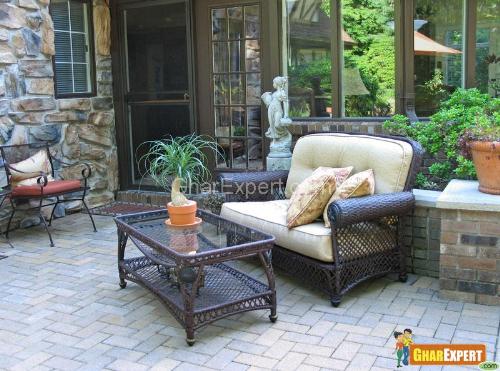
Brick Floor on Terrace

Trendy Brick Floor
(This Picture is Contributed by "Sharmishtha")
Ceramic Tile Flooring
One of the most common uses of ceramic tiles is for flooring design in homes. Ceramic tiles are affordable, have low-maintenance, and can easily match with any room decor. These tiles come in various sizes, shapes, thicknesses, and colors, and are either glazed or unglazed.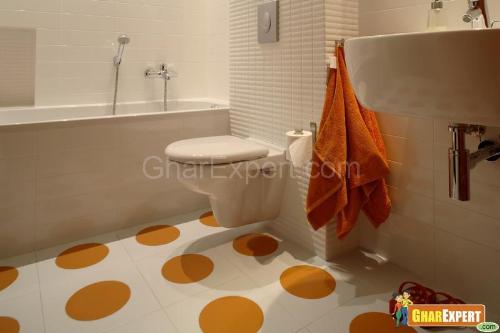
Ceramic Tile Flooring with minimal designing
Tiles are available in different sizes.
| Length (mm) | Breadth (mm) | Thickness (mm) |
| 200 | 200 | 5-6 |
| 250 | 250 | 5-6 |
| 300 | 300 | 5-6 |
Marble Flooring
Marble is usually found as rectangular, square tiles or as whole slabs. One side is smooth and the edges are beveled (sloping). Marble tiles provide beauty for years and functionality to your home with low maintenance. These tiles are durable and available in varieties of colors such as white, pink, green, grey etc. these tiles come in plain as well as textured form. This flooring provides an elegant, royal and decorative look to the room. They are suitable for almost any place.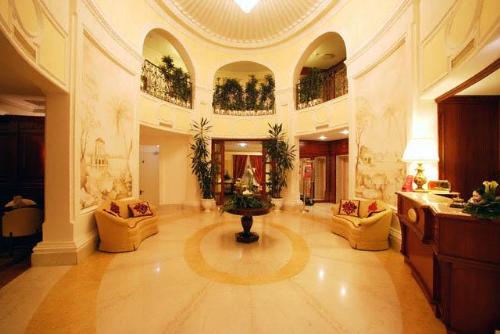
Royal villa with marble flooring
(This Picture is Contributed by "Ahmed")
White Marble Flooring
White marble stones of good quality are used. These stones have uniform veins and are spotless. This flooring is recommended for Hotels, Hospitals, Rest houses and Ban glows.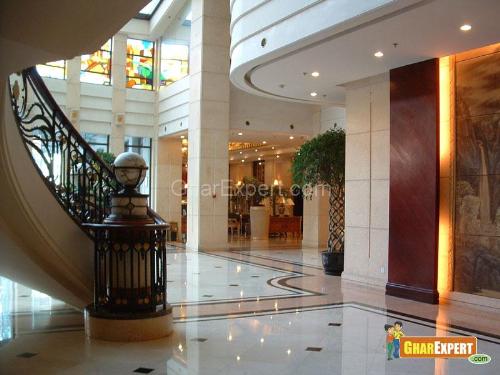
White Marble Flooring with minimal designing
Kota Stone Flooring
Kota stone is a flat rectangular limestone. It is available as rough natural slab in natural blue, green and brown color. Kota stone is a natural stone which provides value for money to common man. It is hard and strong and remains undamaged for hundreds of years, yet it is cheap in prices. Kota in its natural surface is useful for exteriors and high traffic areas like swimming pool etc. It offers non slippery surface and good look. Its polished surface finish is highly suitable for Interiors. It can be used in bedroom, dining room, guest room, particularly in circulation area. in fact in whole house, office etc.Wooden flooring
Hardwood flooring is one of the most popular and beautiful flooring which has been in use for years. It has an elegance, charm, and durability that make it a popular choice in most of modern homes. The style of hardwood flooring you choose should be a decision based on your lifestyle, the construction of your house, and your budget. This flooring may be used for auditoriums, dance halls, gymnasium floors etc. The thickness of wooden blocks does not exceed 10 mm. The blocks are laid in desired patterns and they are fixed by means of hot glue. Then they are nailed with the help of panel pins. The heads of these pins are punched off and putty is filled in the holes.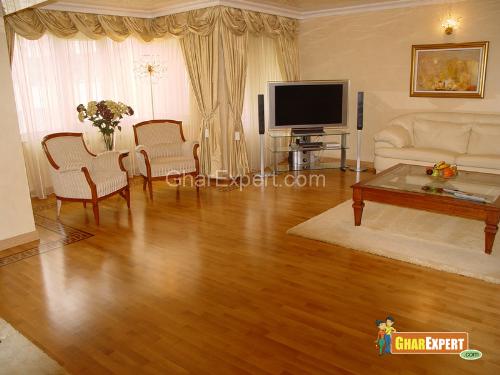
Wooden Flooring

Wooden dine
( This Picture is Contributed by "Sharmishtha"









